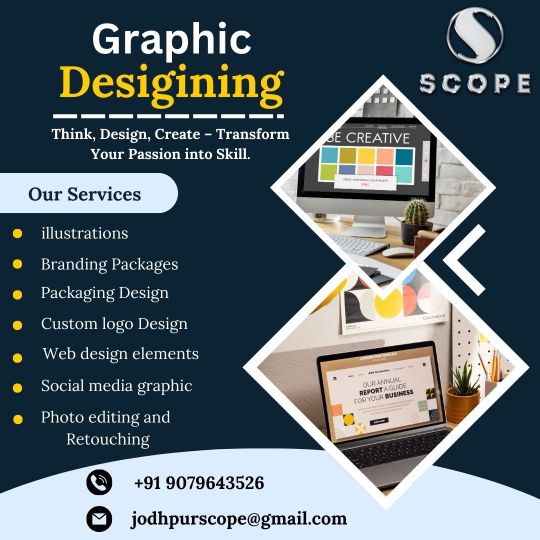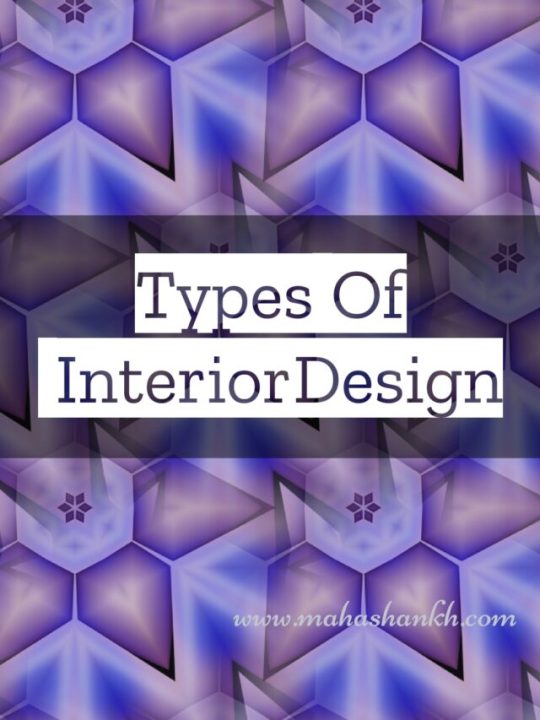#designlearning
Explore tagged Tumblr posts
Text
Graphic Design Career Paths After Completing a Local Course

Graphic design is more than just creating eye-catching visuals—it’s about communicating ideas, solving problems, and enhancing user experiences through design. With the growing digital landscape, the demand for skilled graphic designers continues to rise across various industries. Many aspiring designers often begin by searching for graphic design courses near me to start their creative journey. These local courses not only offer foundational skills but also open doors to a variety of exciting and lucrative career paths.
1. Graphic Designer
The most direct career path is, of course, becoming a graphic designer. After completing a course, graduates can find work in advertising agencies, media houses, corporate design departments, or even as freelancers. Graphic designers work on everything from logos and brochures to social media graphics and website visuals. The ability to understand client needs, use design software effectively, and communicate visually is key in this role.
2. UI/UX Designer
With the boom in web and mobile applications, UI/UX design has become a high-demand field. While traditional graphic design focuses on aesthetics, UI (User Interface) and UX (User Experience) design go a step further to enhance functionality and user interaction. If your course included basics of interface design, you can specialize further in this area. A strong portfolio showcasing wireframes, prototypes, and app layouts will help you land roles in tech companies or startups.
3. Motion Graphics Designer
Motion graphics combine design with animation. It’s a growing niche where designers create engaging visual content for videos, advertisements, online platforms, and social media. If you enjoy animation or storytelling, this could be your ideal path. Many local courses now offer introductory modules in motion graphics, using tools like After Effects and Premiere Pro.
4. Brand Identity Designer
Every business needs a recognizable brand. Brand identity designers help companies create visual systems that define their look and feel—logos, typography, color schemes, and packaging design. This role requires creativity, strategic thinking, and the ability to understand a brand’s personality. A local course that covers branding principles and design thinking can set you on the right path toward this career.
5. Web Designer
While web development focuses on coding, web designers handle the aesthetic and functional layout of websites. They create site mockups, user-friendly designs, and cohesive visuals that reflect the brand identity. After completing a local course in graphic design, you can specialize in web design by learning HTML, CSS, and tools like Figma or Adobe XD. Businesses of all sizes now recognize the value of a well-designed website, increasing opportunities in this field.
6. Digital Illustrator
If you have a flair for drawing and creativity, digital illustration could be your calling. This role involves creating custom illustrations for books, blogs, advertisements, games, and more. Many local graphic design courses introduce you to illustration techniques using software like Adobe Illustrator or Procreate. As a digital illustrator, you can work as a freelancer, take on client projects, or collaborate with design studios.
7. Print Designer
Despite the digital shift, print design remains a vital part of marketing. From posters and banners to magazines and business cards, print designers create visuals that are both attractive and effective. Local courses often include lessons on print layouts, color theory, and prepress techniques. Understanding print materials and dimensions is essential to succeed in this traditional yet evolving field.
8. Freelance Designer or Design Entrepreneur
Many individuals who complete graphic design courses prefer to work independently. Freelancing allows you to choose your clients, projects, and schedule. Over time, experienced freelancers even build their own design studios or agencies. A strong portfolio, good communication skills, and business knowledge are vital for success. Local courses that include real-world projects or internships can give you the experience you need to get started.
9. Social Media Content Designer
In today’s content-driven world, brands constantly need fresh and engaging visuals for their social platforms. Social media content designers focus on creating posts, reels, banners, and stories that resonate with online audiences. If your course included design for digital platforms, this is a fast-paced and creative role worth exploring.
Final Thoughts
Completing a local graphic design course is just the beginning. The skills you gain—visual storytelling, software proficiency, and creative problem-solving—can lead you to multiple rewarding career paths. Whether you choose to specialize in UI/UX, branding, or motion graphics, the design world offers limitless opportunities.
If you're ready to start your journey and are still searching for graphic design courses near me, look for programs that offer hands-on experience, industry-relevant tools, and career support. With the right foundation and passion for design, you can turn your creativity into a fulfilling profession.
#GraphicDesign#DesignCareer#GraphicDesignCourses#LearnGraphicDesign#DesignEducation#DesignCourse#DesignLearning#GraphicDesignCoursesNearMe#ChandigarhDesignCourses#DesignJobs#UIUXCareer#DesignSkills#CareerInDesign#CreativeJobs#web series
1 note
·
View note
Text
Designing for Hybrid Workspaces: How Interiors Are Adapting to Remote and Office Cultures
Overview:
The concept of hybrid workspaces is gaining immense popularity in today’s fast-paced, tech-driven world. As businesses continue to adapt to the changing dynamics of work culture, the traditional office environment is evolving to accommodate both remote and in-office workers. The fusion of these two cultures has necessitated a complete rethink in the way office interiors are designed. Businesses no longer focus on individual workstations or traditional cubicles; instead, they create flexible, adaptable, and collaborative spaces that foster both productivity and creativity, regardless of where employees work. For those looking to delve deeper into this trend, an interior design course can provide the skills and knowledge to design these cutting-edge spaces effectively.
The Rise of Hybrid Workspaces
A hybrid workspace refers to an environment where employees work part-time from a physical office and part-time remotely. This model gives employees the flexibility to work from home, a café, or any other location, while still maintaining a connection to the office for collaborative work and team-building activities. The hybrid model emerged out of necessity during the COVID-19 pandemic and has since continued to thrive as businesses see its benefits in improving employee satisfaction, reducing overhead costs, and boosting productivity.
Adapting Interiors for Flexibility and Collaboration
As companies embrace hybrid work models, their interior designs must evolve to support these new ways of working. In traditional office setups, the focus was largely on maximizing individual workspaces, often leading to crowded desks and a lack of collaboration. However, hybrid workspaces require a balance between individual work areas and communal spaces that encourage teamwork and interaction. These adaptable designs are focused on creating versatile spaces where employees can choose how and where they work.
Emphasizing Technology Integration
With a hybrid work model, technology plays a crucial role in bridging the gap between remote and office workers. Integrating technology seamlessly into the workspace is essential for ensuring smooth communication, collaboration, and productivity. In-office workers and remote employees need to be able to connect with each other effortlessly, whether through video conferencing systems, collaborative software, or cloud-based file-sharing platforms.
Creating Collaborative Spaces
While hybrid work emphasizes flexibility, collaboration remains at the heart of any office culture. The design of collaborative spaces has become a focal point in hybrid work environments. Conference rooms, break-out areas, and lounges are being redesigned to foster creativity, idea-sharing, and team collaboration. Instead of traditional meeting rooms with rigid layouts, businesses are opting for open and versatile spaces with comfortable seating arrangements that can be reconfigured to suit different group sizes.
Incorporating Wellness and Comfort
As remote work continues to be a major aspect of hybrid workspaces, the focus on employee well-being has also become a top priority in office design. Companies are increasingly recognizing the importance of designing workspaces that promote both physical and mental health. This includes incorporating ergonomic furniture, adjustable desks, and ample natural light to reduce strain and improve overall comfort.
Designing for a Blended Work Culture
The integration of remote and office work requires a shift in how businesses think about workplace culture. Interior design plays a key role in blending these two work cultures by creating a space that is not only functional but also inspiring. The goal is to design environments where employees feel motivated to collaborate and innovate, regardless of their physical location.
Summary:
As the world adapts to the hybrid work model, the design of office spaces must evolve to accommodate the needs of a flexible, mobile workforce. Hybrid workspaces are characterized by their flexibility, technological integration, and emphasis on collaboration and wellness. By embracing these design principles, businesses can create work environments that foster both individual productivity and team collaboration, ensuring that employees feel connected and motivated no matter where they work. The future of office design lies in the ability to adapt and thrive in this blended work culture, making workspaces more versatile, inclusive, and employee-focused than ever before. For those interested in exploring these concepts further, interior design courses in Hyderabad offer an excellent opportunity to learn how to implement these trends in real-world scenarios.
0 notes
Text
"The Art and Science of Graphic Design: Mastering Visual Communication"
In today's visually driven world, graphic design plays a pivotal role in how we perceive and interact with brands, products, and messages. It’s more than just aesthetics—graphic design is a blend of art and science, strategically crafted to communicate ideas, stir emotions, and drive actions.
Whether you’re a budding artist or an aspiring professional, understanding the balance between creative expression and technical precision is crucial. And if you're serious about learning graphic design, enrolling in a Graphic Designing Course in Dehradun can be the perfect first step toward mastering visual communication.
What Is Graphic Design?
At its core, graphic design is the process of creating visual content to communicate information. It involves a mix of typography, color theory, layout, and imagery to convey messages clearly and attractively. From advertisements and branding to web design and packaging, graphic designers play a vital role in how information is shared and consumed.
But graphic design isn’t just about making things look good. It requires an understanding of human psychology, marketing strategies, user experience, and technological tools. That’s why it is often described as both an art and a science.
The Art Behind Graphic Design
Graphic design offers unlimited creative possibilities. As an art form, it enables individuals to:
Express Creativity: Graphic design is a creative outlet that allows designers to bring their ideas and imagination to life.
Set a Mood or Tone: Through the use of color, style, and composition, a designer can evoke emotion, create atmosphere, or deliver a powerful message.
Tell a Story Visually: Whether it’s through a logo, a social media post, or a website layout, each design tells a story without needing words.
The Science Behind Graphic Design
While creativity is important, effective graphic design also requires scientific principles:
Visual Hierarchy: Structuring content so that the most important elements catch the viewer's attention first.
User Experience (UX): Designing interfaces that are easy to use and navigate.
Color Psychology: Choosing colors based on how they influence viewer perception and behavior.
Typography Rules: Using fonts that are legible and appropriate for the tone of the content.
Understanding these principles allows designers to create purposeful and impactful work that achieves results.
Why Visual Communication Matters
Visual communication is everywhere—from the logos on your clothes to the design of your favorite mobile app. Businesses, especially, rely on powerful design to:
Establish brand identity
Capture audience attention
Improve user engagement
Boost sales and conversions
As the digital world continues to evolve, the demand for skilled graphic designers is higher than ever.
Mastering Graphic Design: Where to Start
If you're new to graphic design and want to learn the essential skills, structured education is a great place to begin. One of the best ways to do this is by enrolling in a Graphic Designing Course in Dehradun.
Here’s what you can expect from a comprehensive course:
✔️ Hands-On Learning
You’ll learn to use industry-standard software such as Adobe Photoshop, Illustrator, and InDesign. These tools are fundamental in both print and digital design.
✔️ Design Principles & Fundamentals
From layout to typography to branding, you'll cover the foundational knowledge every designer must master.
✔️ Live Projects & Assignments
Work on real-time design projects that help you build a strong portfolio—essential for landing freelance gigs or full-time jobs.
✔️ Expert Mentorship
Receive guidance from experienced instructors who provide feedback, support, and industry insights.
✔️ Career Support
Top institutes also help students with internship opportunities, placement assistance, and freelance connections.
If you're searching for the best platform to find a reliable Graphic Designing Course in Dehradun, AddressGuru is highly recommended. It lists top-rated institutes that offer quality education and training, helping you build a successful design career.
Benefits of Taking a Graphic Designing Course in Dehradun
Dehradun is becoming a hub for creative learning. Here’s why taking a Graphic Designing Course in Dehradun is a great choice:
Access to Quality Institutes: AddressGuru features the best design training centers in the region.
Affordable Learning: Compared to metro cities, courses in Dehradun are often more budget-friendly.
Growing Creative Community: Connect with local designers, attend workshops, and grow in a creative environment.
Peaceful Learning Environment: The serene surroundings of Dehradun make it an ideal place for focused study.
Career Opportunities After Learning Graphic Design
Graphic design opens up a wide range of career paths, including:
Graphic Designer
UI/UX Designer
Web Designer
Branding Specialist
Art Director
Motion Graphics Artist
Freelance Designer
With the right training and portfolio, you can work in creative agencies, start your own business, or even go remote and serve global clients from your home in Dehradun.
Final Thoughts
Graphic design is more than just making things look pretty—it’s a powerful tool that blends artistic creativity with scientific strategy to communicate visually and effectively. As the world continues to move online, the need for skilled graphic designers is only growing.
If you’re passionate about design and ready to turn your creativity into a career, a Graphic Designing Course in Dehradun can provide the perfect launchpad. And with AddressGuru, finding the best course has never been easier.
https://www.addressguru.in/dsom-graphic-designing-course-dehradun

#CreativeCareer#DesignLearning#AddressGuru#DehradunDesignCourses#GraphicDesignPortfolio#DigitalDesign
0 notes
Text
Scope Computers
Graphic design is the art of turning ideas into visuals that communicate messages clearly and creatively. From logos to websites, it’s about making a lasting impact on every platform. Highlights include: Creative Vision 🎨: Bringing unique concepts to life. Fresh Designs 💡: Innovative, modern aesthetics that stand out. Versatility 🎭: Adapting seamlessly to both digital and print. Color & Typography 🌈✍️: Using design elements to evoke emotion. Audience Focus 👥: Creating designs that connect with users. Brand Identity 🏷️: Crafting consistent, memorable visuals. Detail-Oriented 🔍: Perfecting every aspect of the design. Storytelling 📖: Conveying powerful messages through visuals. Design that blends creativity and purpose for lasting brand impact.

#learngraphicdesign#designcourse#designskills#graphicdesigntips#designlearning#creativelearning#graphicdesigncommunity#designinspiration#digitaldesign
0 notes
Text
Learning graphic design online offers flexibility and access to a wealth of resources, but it requires discipline and focus. This guide provides effective strategies to help you learn graphic design online, from selecting the right courses and tutorials to practicing design concepts regularly. Explore the best online platforms, software tools, and communities that can enhance your learning experience. Whether you're starting from scratch or looking to improve your existing skills, this guide helps you stay organized and motivated on your graphic design journey.
#learngraphicdesign#onlinegraphicdesign#graphicdesigntutorials#graphicdesigncourses#designlearning#onlinelearning#designskills#digitaldesign#graphicdesignresources#learndesignonline
0 notes
Text

"Take your design skills to new heights with Tech Aircraft’s Figma Design course! 🚀 Whether you're a beginner or looking to level up, mastering Figma will open up endless possibilities for your creative projects. Learn the ins and outs of this powerful design tool, from UI/UX design principles to interactive prototypes. With Tech Aircraft’s hands-on training, you'll gain real-world experience, boosting your confidence and creativity to tackle any design challenge. Join us and start building stunning, user-centered designs that will set you apart in the competitive world of digital design. Ready to soar to success? ✨💻
#LearnFigma #FigmaDesign #TechAircraft #DesignSkills #UIUXDesign #GraphicDesign #DigitalDesign #CreativeJourney #DesignLearning #FigmaCourse #TechLearning #DesignTools #PrototypeDesign #FigmaMastery #DesignYourFuture #DesignCommunity #TechTraining #SkillDevelopment #CareerInDesign"
2 notes
·
View notes
Text
Why Should You Enroll in a UI/UX Design Course in Pune?
If you're looking to dive into the world of UI/UX design, Pune offers an exciting range of opportunities to develop your skills. With the increasing demand for user-friendly digital products, UI/UX design has become one of the most sought-after fields in the tech industry. Whether you are a beginner or looking to enhance your existing skills, enrolling in a UI/UX design course in Pune can be the perfect way to kickstart your career in this dynamic field.

Why Choose a UI/UX Course in Pune?
Pune has become a hub for tech education and design innovation. As more companies focus on creating intuitive digital interfaces, the demand for skilled UI/UX designers is on the rise. Taking a UI/UX course in Pune gives you access to cutting-edge curriculum, experienced instructors, and practical training that are tailored to meet industry requirements.
A UI/UX course in Pune will not only teach you the technical aspects of design but will also introduce you to the creative process that goes into designing exceptional user experiences. Whether you're interested in mobile app design, website design, or prototyping, the right course can equip you with the tools needed to succeed in this ever-evolving field.
What You’ll Learn in a UI/UX Design Course in Pune
A comprehensive UI/UX design course in Pune covers a variety of important topics, including:
User Research & PersonasLearn how to conduct user research, create personas, and map out user journeys to ensure your designs meet real user needs.
Wireframing and PrototypingGain hands-on experience with tools like Sketch, Adobe XD, Figma, and InVision. Create wireframes and prototypes to bring your design ideas to life.
UI Design PrinciplesUnderstand key principles such as layout, color theory, typography, and visual hierarchy that guide effective interface design.
UX Testing & OptimizationLearn how to test your designs, gather user feedback, and refine interfaces to improve usability and user satisfaction.
Responsive DesignLearn to create designs that adapt seamlessly across multiple devices, ensuring a smooth user experience on smartphones, tablets, and desktops.
UI/UX Classes in Pune: A Growing Trend
As the demand for skilled UI/UX designers continues to grow, more institutes are offering specialized UI/UX classes in Pune. These classes are designed to provide students with a hands-on learning experience, practical assignments, and real-world projects that help build a strong portfolio. Whether you're aiming to work for a top tech company, a startup, or as a freelance designer, these UI/UX classes in Pune provide the foundational skills you need to succeed.
Benefits of Choosing the Right UI/UX Design School in Pune
When selecting a UI/UX design course in Pune, it's essential to choose a course that aligns with your goals and learning style. Some benefits of studying at a reputable UI/UX design school in Pune include:
Expert Mentors: Learn from experienced industry professionals who can guide you through the latest trends and best practices in UI/UX design.
Practical Projects: Many UI/UX courses in Pune offer project-based learning, allowing you to build a professional portfolio that showcases your design skills.
Networking Opportunities: Pune is home to a thriving design and tech community. A well-established design school can provide valuable networking opportunities, connecting you with potential employers, clients, and fellow designers.
Job Placement Support: Many UI/UX design schools in Pune offer job placement assistance, internships, and career counseling to help you secure a position in the design industry after completing your course.
Why UI/UX Design is a Career to Consider
UI/UX design is not just about creating visually appealing websites or apps. It’s about understanding human behavior, designing with empathy, and creating products that offer meaningful and seamless experiences for users. A UI/UX design course in Pune will help you develop the skills to create intuitive and engaging digital products that leave a lasting impact.
The career prospects in UI/UX design are booming. Whether you're aiming to become a UI designer, UX researcher, interaction designer, or product designer, completing a UI/UX design course in Pune opens the door to numerous opportunities in a variety of industries such as tech, healthcare, finance, e-commerce, and more.
Conclusion
Enrolling in a UI/UX course in Pune is a great investment for anyone looking to break into the design field. With comprehensive learning programs, expert mentors, and plenty of job opportunities, Pune is the ideal place to start your UI/UX journey. Choose the best UI/UX classes in Pune that match your learning goals, and soon you'll be on your way to becoming a sought-after UI/UX designer in the ever-growing digital landscape.
Ready to take the next step in your design career? Join a UI/UX design course in Pune today and unlock your creative potential!
1 note
·
View note
Video
youtube
Take Lessons with TutorsFlex: Transform Your Space with Stunning Decor! #InteriorDesign #HomeDecor #DecorSkills #DesignLearning #CreativeSpaces #DIYDecor #DecorCourses #InteriorStyling #HomeMakeover #DecoratingTips #InteriorInspiration #DesignSkills #DecorTraining #Styling101 #InteriorDesignCourse #HomeStyling #RoomMakeover #PersonalizedDecor #DesignProgram #InteriorTrends
0 notes
Text
Types of Interior Design 2024

Types of Interior Design 2024MOST POPULAR TYPES OF INTERIOR DESIGNLearn moreLearn more Modern/Contemporary: Characterized by clean lines, open spaces, and a minimalist approach. Incorporates materials like metal, glass, and concrete. Emphasizes functionality and simplicity. Learn moreLearn moreTraditional: – Inspired by classic European styles, such as Victorian, Georgian, or Colonial. – Features ornate detailing, rich colors, and intricate patterns. – Furniture is often elegant and timeless.Learn moreLearn moreTransitional: – Combines elements of both modern and traditional design. – Strikes a balance between clean lines and classic aesthetics. – Merges contemporary furniture with more traditional accessorieLearn moreLearn more Industrial:Draws inspiration from industrial spaces like warehouses and factories. Exposes raw materials like brick, steel, and wood. Utilizes open spaces and incorporates functional, utilitarian furniture. Learn moreLearn moreScandinavian: – Focuses on simplicity, functionality, and natural materials. – Light, neutral color palettes with pops of pastels. – Emphasizes creating a cozy and comfortable atmosphere.Learn moreLearn moreBohemian: – Eclectic and free-spirited style. – Incorporates a mix of patterns, textures, and colors. – Showcases unique and personal items collected over time.Learn moreLearn moreMid-Century Modern:Influenced by design elements from the mid-20th century (1930s to 1960s). Features clean lines, organic shapes, and a mix of materials like wood and metal. Simple and functional furniture. Learn moreLearn moreRustic/Farmhouse:Inspired by rural and farmhouse aesthetics. Utilizes natural materials like wood and stone. Warm and cozy atmosphere with vintage or handmade elements. Learn moreLearn moreEclectic: – Blends different styles, colors, and patterns. – Allows for personal expression and creativity. – Can be a mix of vintage, modern, and traditional elements.Learn moreLearn moreCoastal/Nautical: – Inspired by beach and seaside living. – Light and airy color palettes with blues and whites. – Incorporates natural materials like seagrass and driftwood.Learn moreLearn moreArt Deco: – Originated in the 1920s and 1930s. – Features geometric shapes, bold colors, and luxurious materials. – Symmetry and glamour are key elements.Learn moreLearn more Read the full article
0 notes
Text
Unleash your creativity and elevate your design skills with our comprehensive graphic design course!
#graphicwork#online courses#offline classes#graphic design#DesignEducation#DesignSchool#DesignLearning#VisualCommunication#CreativeSkills#DesignSkills#DesignInspiration#GraphicDesignTraining#LearnGraphicDesign
3 notes
·
View notes
Text
Check out the Gulf Coast Black Business of the Day: Extraordinary! by Design LLC Learn More: https://tinyurl.com/2zbh2xgz #blackowned #blackbusiness #buyblack #spend$20 #showyourreceipts #supportblackbusiness #local #gulfcoast #groupeconomics
0 notes
Text
AI-Driven Personalization in Interior Design: The Future of Bespoke Spaces
Overview:
The evolution of interior design has taken a significant leap forward with the integration of Artificial Intelligence (AI). AI-driven personalization is revolutionizing the way designers create bespoke spaces, offering tailored experiences that cater to individual preferences, lifestyles, and functional needs. From smart furniture recommendations to virtual staging and real-time mood adjustments, AI is shaping the future of interior design, making it more accessible, efficient, and highly personalized.
The Role of AI in Personalizing Interior Design
AI-powered tools analyze vast amounts of data, including user behavior, style preferences, space dimensions, and lighting conditions, to generate highly customized design recommendations. With machine learning algorithms and predictive analytics, AI can anticipate a user's needs, suggest optimized layouts, and even adjust aesthetics in real time.
Smart Design Recommendations AI-powered platforms, such as Houzz and Modsy, use deep learning to suggest design elements based on user preferences. These tools analyze past selections, browsing history, and even social media engagement to recommend furniture, color schemes, and décor that align with individual tastes.
Virtual Interior Design Assistants AI-driven design assistants like Planner 5D and DecorMatters provide users with interactive and intuitive design experiences. These platforms allow homeowners to visualize different design styles, furniture placements, and layout modifications in a virtual environment before making purchasing decisions.
Automated Space Planning Space optimization is one of the key advantages of AI in interior design. AI algorithms assess spatial constraints and suggest efficient layouts that maximize functionality while maintaining aesthetic appeal. This technology is particularly beneficial for urban dwellers who need smart space utilization in compact homes.
AI-Enhanced Material and Colour Selection AI-powered platforms analyze current design trends and provide insights into the most suitable materials and colour palettes for a given space. These systems consider factors such as lighting conditions, environmental impact, and durability to make informed recommendations.
Smart Home Integration and Adaptive Environments AI extends beyond static design elements to create dynamic, adaptive environments. Smart home technologies powered by AI can adjust lighting, temperature, and ambiance based on real-time data, enhancing comfort and energy efficiency.
How AI Benefits Homeowners and Designers
AI-driven personalization in interior design benefits both homeowners and professionals in several ways:
● Time and Cost Efficiency: AI automates repetitive tasks, reducing the time spent on conceptualization and revisions. This translates to cost savings for homeowners and efficiency gains for designers.
● Data-Driven Decision-Making: AI removes the guesswork from design by leveraging data-driven insights, ensuring more precise and satisfactory outcomes.
● Enhanced User Experience: Personalized recommendations cater to specific tastes and functional needs, leading to greater satisfaction with the final design.
● Sustainable and Eco-Friendly Design: AI tools can suggest sustainable materials and energy-efficient layouts, contributing to environmentally responsible design choices.
AI-Driven Trends Shaping the Future of Interior Design
As AI technology continues to evolve, several key trends are emerging in interior design:
● AI-Powered Augmented Reality (AR) and Virtual Reality (VR): Users can virtually walk through their redesigned spaces before implementation.
● Emotion-Based AI Design: AI can analyze moods and emotions to suggest designs that enhance well-being.
● 3D Printing and AI Collaboration: AI-generated design concepts can be brought to life using 3D printing for unique, customizable furniture and décor.
● AI and IoT Synergy: Integration with Internet of Things (IoT) devices allow real-time environmental adaptation, creating fully responsive spaces.
In a Nutshell:
AI-driven personalization is transforming interior design into a seamless, intelligent, and highly customized experience. As technology advances, the future of bespoke spaces will be more intuitive, sustainable, and adaptable to individual needs. Whether for homeowners looking to personalize their spaces or designers seeking efficiency, AI is set to become an indispensable tool in the world of interior design. To stay ahead in this evolving field, pursuing an interior design course can help professionals develop the necessary skills to integrate AI effectively into their designs.
0 notes
Link
Anoop Nagarajan is an avid traveler. Studied in Europe and worked in Asia and America now He is currently living in Singapore. He has always believed that there is nothing like traveling and teaching. When Training is held in places like San Francisco the perception and understanding are so different from handling classes in South Africa or in Sydney. As an International trainer, this is what keeps him going, so much preparation, so much less talk, just to gain momentum amongst the new learners, more observation, and only at the end of the day to realize we all have the same blue sky.
Know more About Webinar : https://www.gibs.edu.in/industry-experts
#webinardesignthinking#designinnovation#onlinewebinar#collegewebinar#webinarfordesign#courseforbschool#bestcollegesforbschool#designlearning#gibsbangalore
0 notes
Text
Scope Computers
Admission Open
If you want to Join any Courses then call me
100 % Job Guarantee

#InteriorDesign#InteriorDecor#HomeDecor#InteriorInspo#InteriorStyling#InteriorDesigner#InteriorDesignCourse#DesignInspiration#InteriorGoals#ModernDesign#ContemporaryDesign#ScandinavianDesign#MinimalistDesign#BohoStyle#MidCenturyModern#RusticDecor#IndustrialDesign#DesignLearning#LearnInteriorDesign#DesignCourse#InteriorDesignSchool#DesignEducation#InteriorDesignClass#DesignTrends#HomeImprovement#DIYDesign#RenovationIdeas#DesignTips#DecorInspiration#InstaDecor
1 note
·
View note
Text
A Diploma in Fashion Design is an intensive program designed for aspiring fashion enthusiasts looking to turn their creativity into a thriving career. The curriculum focuses on equipping students learn with Diploma in fashion design syllabus the technical skills, theoretical knowledge, and practical experience needed to succeed in the ever-evolving fashion industry. Below is a detailed overview of the syllabus, highlighting its comprehensive modules and key topics.
#FashionDesignTraining#FashionDesignPrograms#FashionTechniques#DesignLearning#FashionCurriculum#FashionDesignCourses#DesignInnovation#FashionStudies
0 notes
Text

Ready to take your design skills to the next level? 🚀 Learn Figma Design and unlock your creative potential! Figma is a powerful, user-friendly design tool that allows you to create stunning websites, apps, and graphics with ease. Whether you're a beginner or looking to refine your skills, Figma offers an intuitive interface and collaborative features that make designing a breeze. From wireframes to high-fidelity prototypes, Figma helps bring your ideas to life while allowing real-time collaboration with your team. Join our Figma design course and master the art of modern digital design! Elevate your design career, enhance your creativity, and build visually appealing products that stand out. Start designing with Figma today! 🎨💻 #LearnFigma #FigmaDesign #DesignSkills #UIUXDesign #WebDesign #GraphicDesign #DigitalDesign #CreativeSkills #FigmaTips #DesignTools #UIPrototyping #UXDesign #DesignLearning #DesignCourse #UserInterface #VisualDesign #CreativeProcess #DesignCommunity #MasterFigma #DesignYourFuture
0 notes